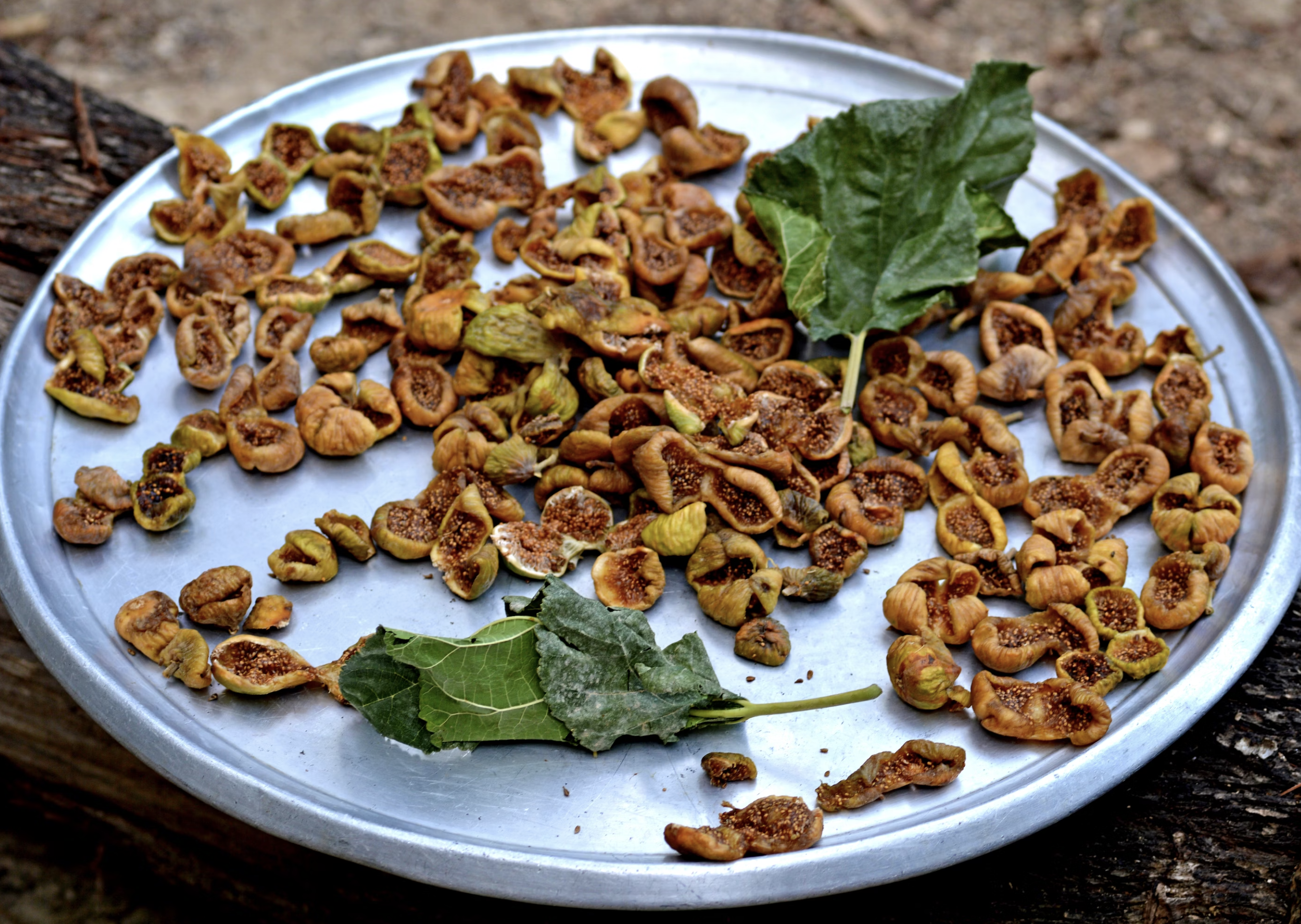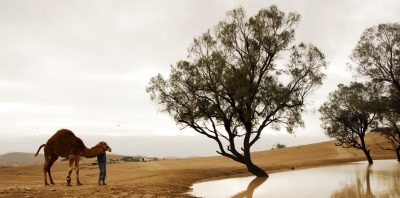The strong grey trunk, the wide velvety leaves, the sticky itchy white milk resin that leaks from the cracked leaves, its round crimson fruits with their bellies filled with honeyed goodness. In my opinion, nothing beats a fig tree.
The fig (which tastes great baked or with fresh cream and arak) is strictly native to the Middle East, specifically Syria and Anatolia. From there, the fig has been transported to North Africa, Spain and Italy, South America, Mesopotamia, Iran, India and most recently in California. The worldliness of the fig tree aided by the master of it all, the special pollinating fig wasp the Blastophaga psenes, have resulted in over 750 varieties, each with its own particular genetic print. Like a person, each fig has a different character: a taste, shape and color.
The names of many of the Middle Eastern fig varieties take root from descriptive words, for example the variety named Byadi originates from the Arabic word Abyad for white, and it can be found in Lebanon, Syria and Jordan.
In Italy, fig varieties are named after their place of origin like “Dei greci”, of the Greeks, or “Della Monaca”, of the nuns, alternatively they are named after the period in which they ripen such as the “Natalina”, Christmas period or “Tardiva”, the late comers.
Here is a sample of fig varieties from the Middle East:

Lebanese red: Lebanese varieties found along the coast.

Barada: Honey flavored from the historic Christian village of Sidnaya outside of Damascus

Byadi: From the village of Mishtayeh in Syria.

Shtawi: Shtawi comes from the word Shitaa’ in Arabic which means winter. It ripens very late, usually in November into Christmas and it is a variety grown in Koura, Lebanon.

Sumaki: Originally from Syria, it’s one of the finest tasting figs. It’s named after the Sumac spice.

Persian white: Originally from Northern Iran.

Rimaley: Collected from Mishtayeh, Syria. Its a long fig with red interior.
Oh and by the way, the fig is not a fruit but a flower “grown inwards”. To be precise, the fig is the infructescence or scion of the tree, in which the flowers and seeds are borne inside. Here is how you can enjoy your infructescence 5 different ways.




